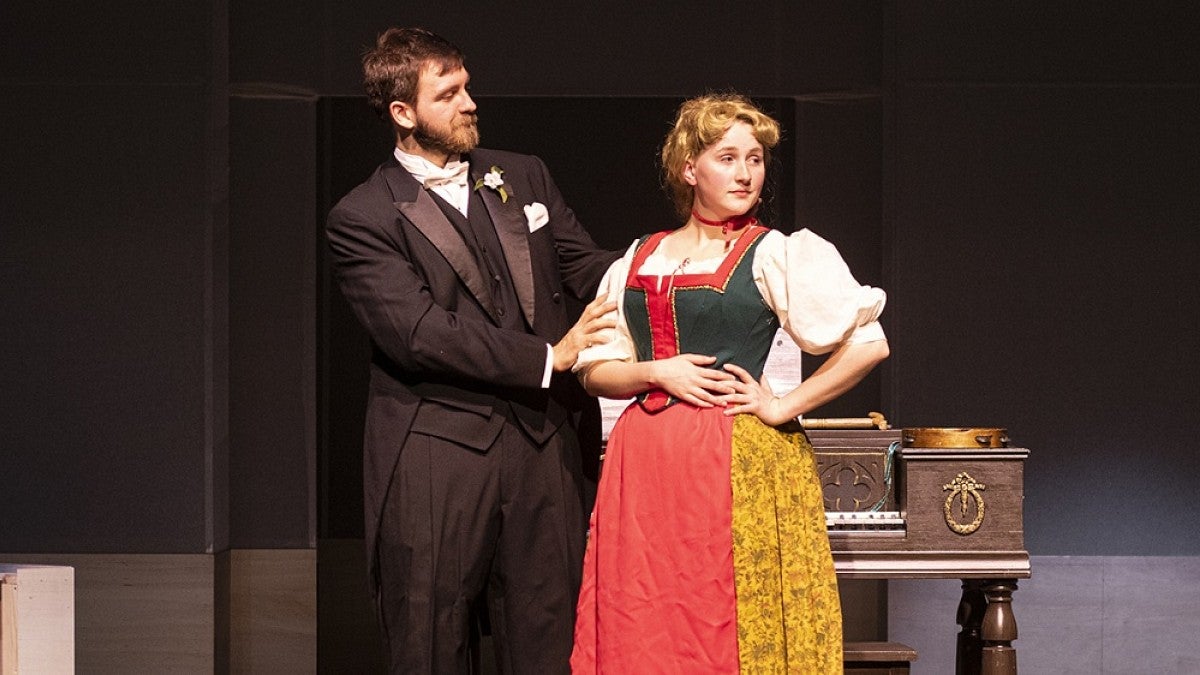This week, University Theatre opens “A Doll’s House,” Henrick Ibsen’s 1879 drama that shocked Victorian audiences with a female protagonist who had the audacity to liberate herself from her unsatisfying marriage.
Opening Feb. 28 at the UO’s Robinson Theatre in the Miller Theatre Complex, “A Doll’s House” will also be performed Feb. 29 and March 6, 7, 13 and 14 at 7:30 p.m. and Mar. 8 at 2 p.m. Admission is free for UO students with ID, $10 for adults and $8 for seniors and non-UO students.
Long before Betty Frieden penned “The Feminine Mystique,” before the #MeToo movement called out powerful men for their misogynist actions, Ibsen’s controversial play was considered a hallmark of early feminism.
The play chronicles the breakdown of the marriage between Nora and Torvald Helmer. Transiting directly from her father’s house into her husband’s, Nora has never known independence. Emotionally she is submissive and childlike, a response to her infantilizing husband, a successful lawyer and strict authoritarian who wields the power and purse strings.
But behind Torvald’s back, Nora asserts her rebellion, from eating forbidden macaroons to taking out an illegal loan, which becomes the catalyst for Nora’s dramatic decision in the end to leave her family and embark on her own journey of self-realization.
Professor Theresa May — the play’s director and the director of graduate studies for theater arts — acknowledges that the 2020 production has relevance to the current #MeToo movement, but with a caveat.
“Does it have any relevance to our current historical ‘me too’ moment? I believe that it does,” she said, “but only if we have compassion for both Nora and Torvald, only if we understandthat the system of gender inequity, which has caused Nora’s predicament, hurts and robs both partners in this marriage of the possibility of a lasting and fulfilling relationship with the person they love.”
Although Ibsen had no intention of being a voice for women’s rights, his powerful and timeless, century-old play raises complicated social questions that continue to resonate with audiences today.
“We have approached this play with an eye for its humanity, rather than its clear, and often celebrated, gender politics,” May said. “We hope that through empathy for all the characters, regardless of their gender identity, our audiences will be moved toward common cause regarding social equality and economic justice.”
In this translation by Frank McGuiness, May said while they are taking a more contemporary approach in their presentation of the play, it is not a modern adaptation.
“The play is still set in the latter half of the 19th century, which means the set and costumes are period-accurate as well,” she said.
However, a few contemporary special effects will be incorporated to enhance the production, including set walls that are constructed of a scrim material.
“Scrim is a lightweight woven fabric that is see-through when lit from an oblique angle, but appears solid when it is lit from the front,” May said. “Accordingly, this will allow us to make interesting scenic and character reveals.”
—By Sharleen Nelson, University Communications


